RETRO
25 May 2023
KLANG – STEREO IS SO RETRO
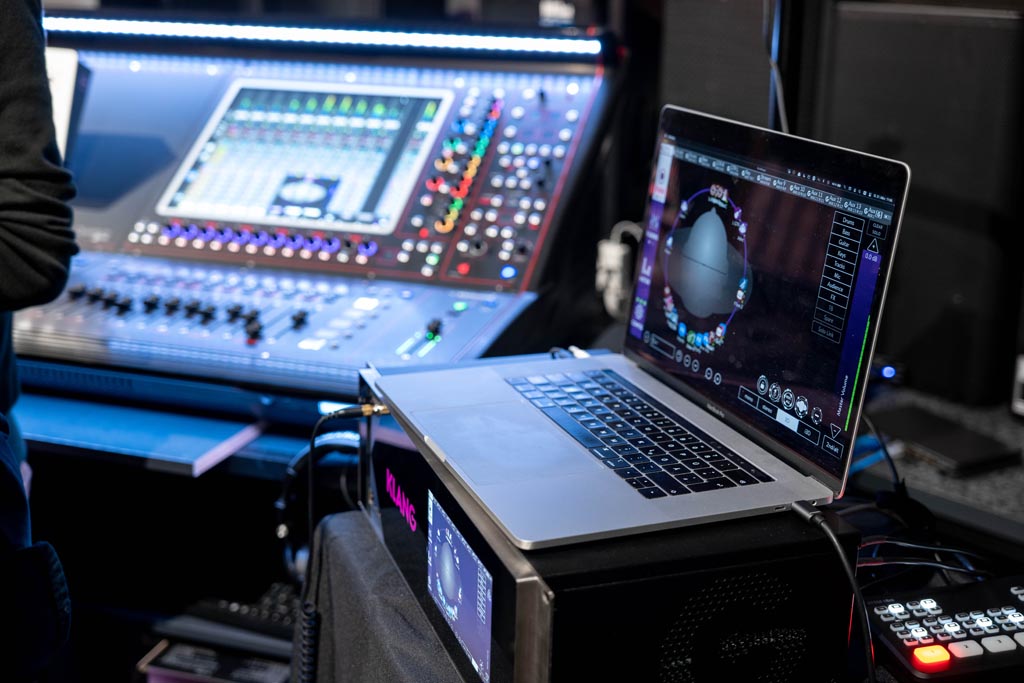
Subscribe to CX E-News
I’ve been keen to hear KLANG’s immersive in-ear mixing platform in action for months, after having spoken to a range of Australian and international sound techs who absolutely swear by it. The thing I kept hearing about the spatialisation processing is that once you used it with an artist, there was no going back. I’d heard this about everyone from local hero Jessica Mauboy right up to Ed Sheeran.
Lucky for me, Phil Kamp, Head of Sales at KLANG:technologies, recently completed a two-week tour of Australia as guest of KLANG distributor Group Technologies, running workshops and presentations around the country. I dropped into Group Technologies HQ in Melbourne to finally hear KLANG in action and get the lowdown from Phil on how it all works, and where it’s going.
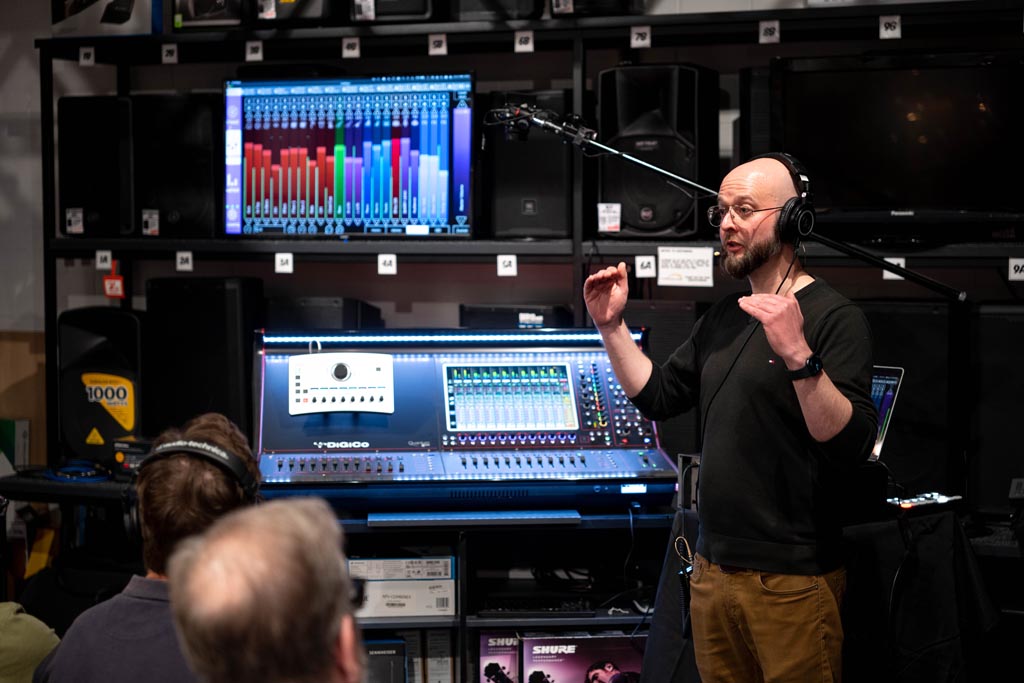
The KLANG environment is pretty straightforward. First, you pick which of the three sizes of processor you need; the KLANG:konductor which can handle 16 immersive mixes and processes 128 input signals at 96kHz, or the KLANG:vokal, giving you 12 mixes of 24 mono or stereo inputs at 48kHz or 96kHz. There’s also a card- based option in the DMI-KLANG featuring 16 mixes with 64 inputs if you’re using a compatible DiGiCo console or Orange Box. KLANG:konductor’s I/O is actually three DiGiCo DMI slots, meaning you can input and output Dante, MADI, Optocore and analog out via DiGiCo’s DMI-Cards. The KLANG:vokal ships with MADI and Dante built-in.
While you can use Klang with any digital mixer, you get integrated workflow if you’re mixing on a DiGiCo SD or Quantum. This brings the interface directly into the console, effectively giving you a 3D panner and capturing all the settings in the console’s Snapshots. If you’re using another brand, you can access the mixing engine via KLANG:app, software that can run on Mac, Windows, iOS, and Android. There’s also a hardware control option for musicians in the form of KLANG:kontroller, with eight push rotary encoders and digital labels for control of mixes, DCAs, or channels.
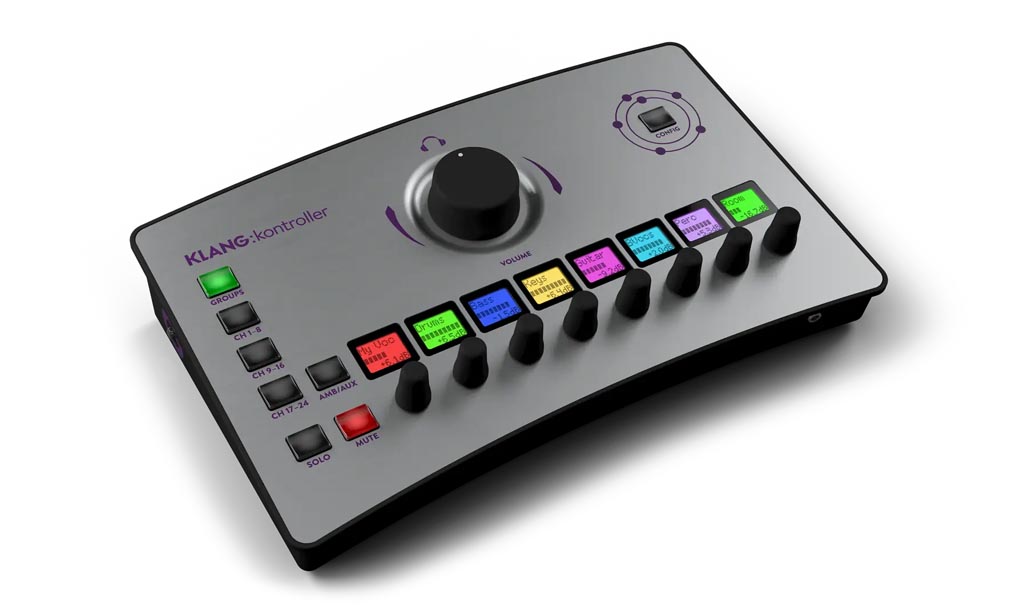

To get started on an in-ear mix using KLANG, you’re going to need to get your head around, and literally into, the concepts of positioning sounds in three-dimensional space for the best monitoring outcomes. There are rich resources on KLANG’s website for you to teach yourself, and presets within KLANG:app called ‘Quick Positions’ that place sounds in the space by order of psychological priority. Without going too deeply into it, your brain pays the most attention to things it perceives as in front of your face, and less attention to sounds lower down and/or behind you. Ergo, you’d mix a vocalist’s own voice to be in front of their forehead, the most important instruments they’re pitching off in front of them, lower down and to their left and right, and keep going through the list of monitoring priorities to allocate the available space until you’re putting things like pad sounds from keys on the ‘floor’ behind them. It’s a completely different way to approach mixing.

Phil and Group Technologies’ Technical Products Manager Scott Jamieson had a DiGiCo Quantum set up in their spacious demo room hooked up to a KLANG:konductor, and the KLANG:app running on a Mac outputting to a big screen. I brought my own in-ears, and plugged into a beltpack they were feeding from the rig. Phil ran a multitrack which was a live recording of a contemporary rock band.
He got me to listen to a stereo mix in my ears first. It was a good mix, and if I was putting myself in the shoes of the lead vocalist, a good monitoring mix of what I wanted to hear. Phil then switched the mix to a KLANG immersive mix. It was immediately a much better mix, with vastly more separation between instruments, and greater breadth and space. It was much easier to hear and concentrate on different instruments. Though interestingly, if I hadn’t known it was immersive, I would have assumed it was a really good stereo mix.
And then Phil switched it back to stereo. Now, I don’t know much about how the human brain actually processes sound, but it’s clear that the boffins at KLANG do. Stereo suddenly sounded like absolute garbage in comparison.
My brain immediately rejected it. I was stunned by how quickly this happened, considering I’ve been listening to stereo perfectly happily my entire life. This is obviously why I kept hearing that engineers that have deployed KLANG have a revolution on their hands if they take it away from their musos. I demanded that Phil explain this brain-changing wizardry to me immediately.
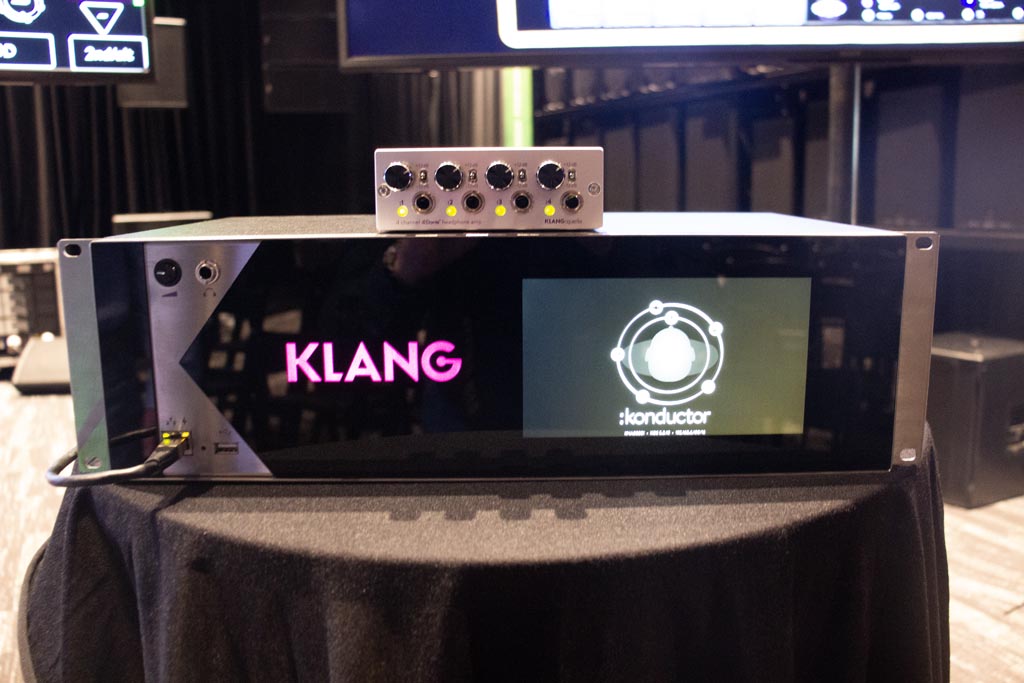
“Our goal at KLANG is to bring the natural way of hearing into monitoring, thus solving the issues of monitoring in stereo,” Phil explained. “Listening to a stereo headphone mix is unnatural for the brain. Our brains aren’t good at differentiating between different signals, which results in musicians turning up their beltpacks, or taking one driver out of an ear, which is unhealthy and dangerous. Over the years, mixing technology has evolved with better mixers and plugins, but that was addressing the symptoms, not the root cause of the issue.”
What KLANG is doing under the hood is encoding the audio signals with what the brain understands as directional information. This means all of the techniques that the brain naturally has to understand audio then work properly. The benefits of this approach include lower monitoring volumes, which addresses hearing fatigue. Prioritising the importance of signals based not just on their level, but also by their perceived physical position makes it easier for the brain to concentrate on what is important. This leads to more stable mixes with less changes day-to-day.
KLANG doesn’t rely on room emulation for its spatialisation, meaning it can work in any acoustic. “In this sense, it’s less like virtual reality and more like augmented reality,” expands Phil. “Emulating a room would potentially conflict with reality. You don’t have to emulate the exact physical structure of the gig in the mixes either. You just create as transparent a mix as possible, using the entire space; around, above, and below. That’s how you separate instruments. In traditional monitor mixing, you’re fighting signals masking each other. With KLANG, you can distinguish between instruments like kick and bass that have overlapping frequencies as long as you place them apart in the sound field.”
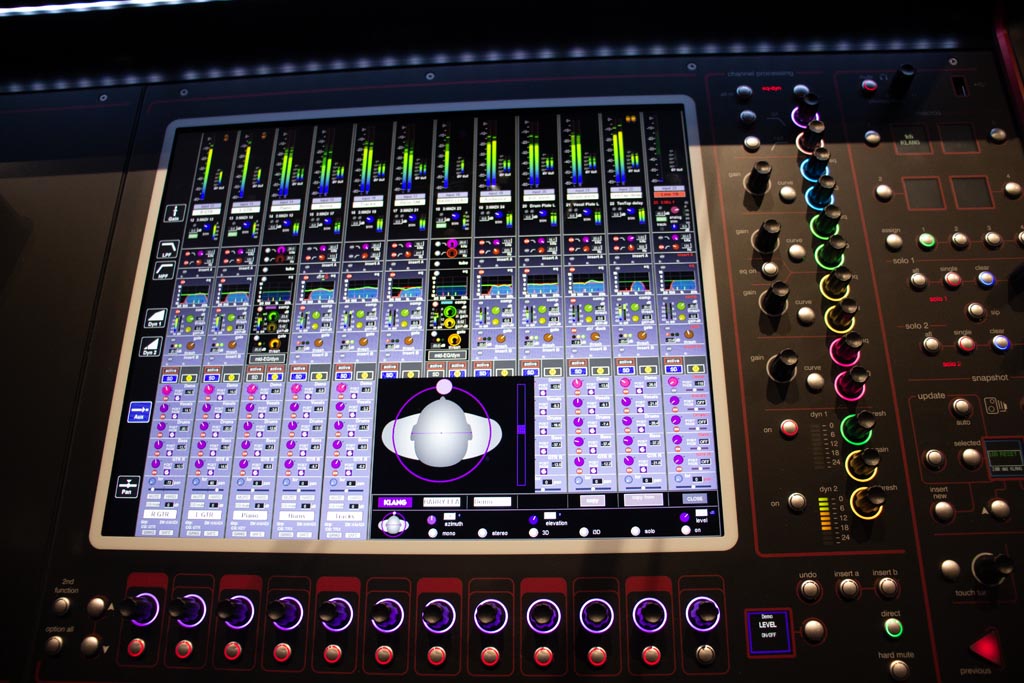
So, how should a monitor engineer go about introducing KLANG to their work? “I like to say that the first thing you should do is don’t tell the musos!” recommends Phil. “If they’re given all the details, they can freak out. It’s completely reasonable for them to be wary of change in something as important to their performance as monitoring. In some cases, based on personality, it could make sense to talk about it, but I say just use it. Similarly, you don’t discuss which compressor model or plug-in you’re using with your musicians, because it doesn’t matter to them; only the result counts. What you can do is give them their beltpacks in engineer mode and let them switch between a stereo mix and a KLANG mix, then they can keep the one they want. Don’t overthink it.”
As a technician entering this new world of position-based mixing, what does Phil suggest for the best results? “I’d say find good positions for the instruments as a starting point. Play around with multitracks. Come to one of our training sessions if you can, as we go deep into the psychological aspects of using positioning. There are also the Quick Positions positional presets you can recall, which sort by priority.
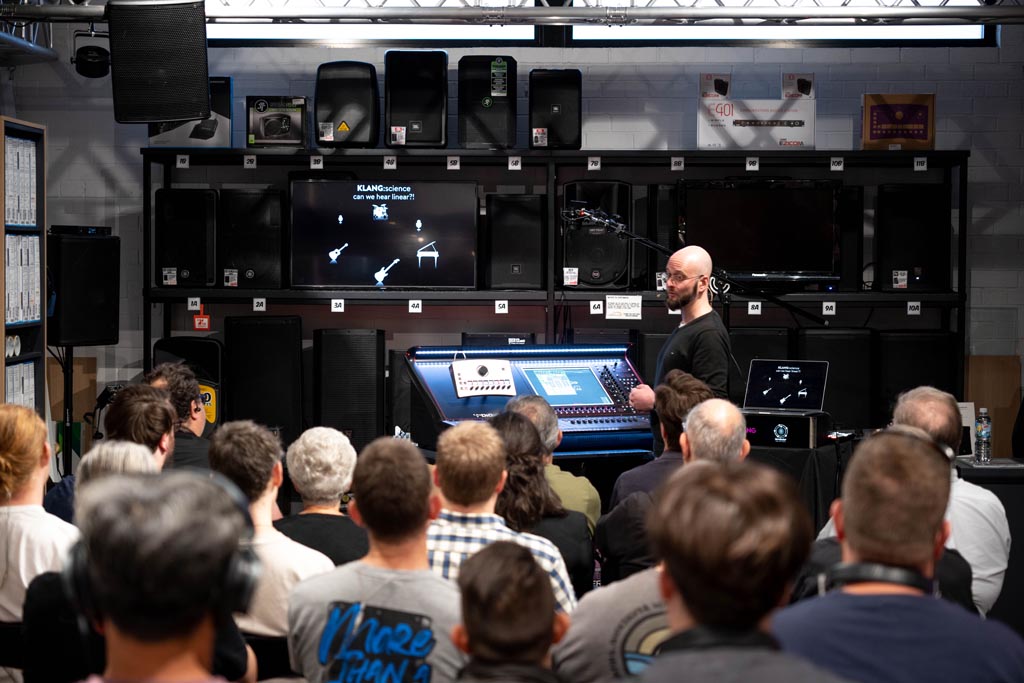
You can see on the GUI that the red area is the ‘focus area’, the highest priority. After you start positioning by priority, everything becomes easy; you can almost keep everything the same level. If you look at the faders on a KLANG mix, it looks like a FoH mix, without the drastic level differences you see in monitors sometimes. You don’t have to use tricks like ducking between kick and bass, or carving out the kick drum root frequency from the bass.
You don’t have to overprocess and compress ‘big’ signals like distorted guitars. Usually, if you import a stereo mix into KLANG, it might sound thin because of all the drastic high cuts and low cuts we usually use to control a stereo in-ear mix. With Klang, your mix can be a lot ‘messier’ and just keep the signals natural.”
Subscribe
Published monthly since 1991, our famous AV industry magazine is free for download or pay for print. Subscribers also receive CX News, our free weekly email with the latest industry news and jobs.




